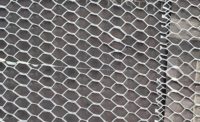It was a year or so ago when my article intimated to a result, to a given test, to a controversial subject, to confirm what us plasterers have known for years. When it comes to control joints in relation to cracking in stucco, let me boldly state: Lath cut or continuous performs the same.
In this month’s article, I wish to delve deep into that dark hole where the perceptions, the myths and just plain old misunderstandings of the control joint in relation to the lath reside.
ASTM C1063 – 17 Section 7.9.1.5 states: “Lath shall not be continuous through control joints, but shall be stopped and tied at each side.” So, there it is, the mandate to cut the lath behind the control joint. This is the golden statement that allows forensic professionals to cease searching for causes of cracking in stucco when the lath is discovered to be continuous behind the control joint. It is presented as the “only” option for stucco assemblies and a violation of code to do otherwise. A few more caveats exist; control joints shall be installed to delineate areas not more than 144 square feet and not more than 100 feet for horizontal areas, and the distance between control joints shall not exceed 18 feet in either direction or a length to width ratio of 2 ½ to 1.
In the Field Applications
In the application of a metal plaster base—what we call lath—ASTM C1063 requires the fastening of said lath to framing members (studs) to be every 7 inches, even at the ends of the lath and prohibits fastening between studs. If the end of the lath terminates between framing members, it must be wire tied every 9 inches. In short, everything must be fastened to a framing member and nothing can be fastened between framing members.




![WC0422-FEAT-ClarkDietrich-p1FT-CJ-EES[1].jpg WC0422-FEAT-ClarkDietrich-p1FT-CJ-EES[1].jpg](https://www.wconline.com/ext/resources/2022/04/12/WC0422-FEAT-ClarkDietrich-p1FT-CJ-EES%5b1%5d.jpg?height=200&t=1649794590&width=200)


Report Abusive Comment